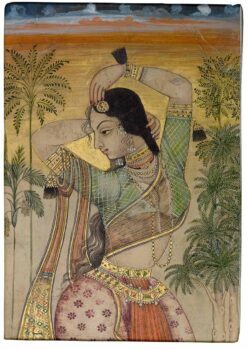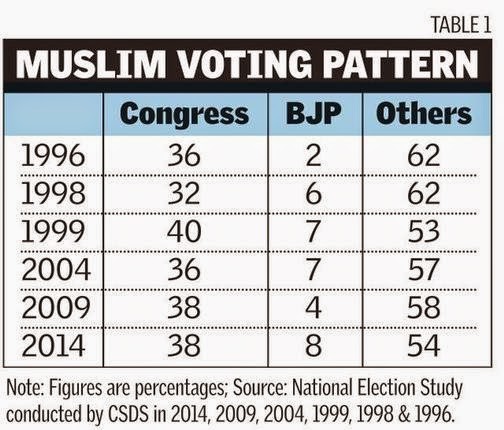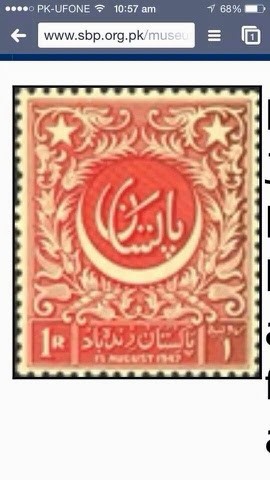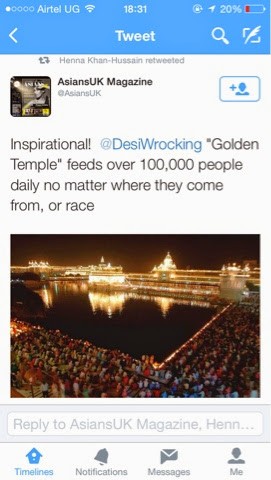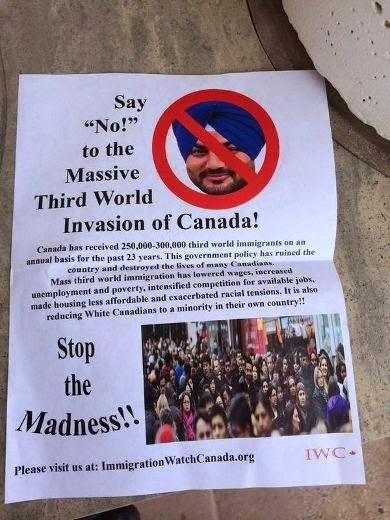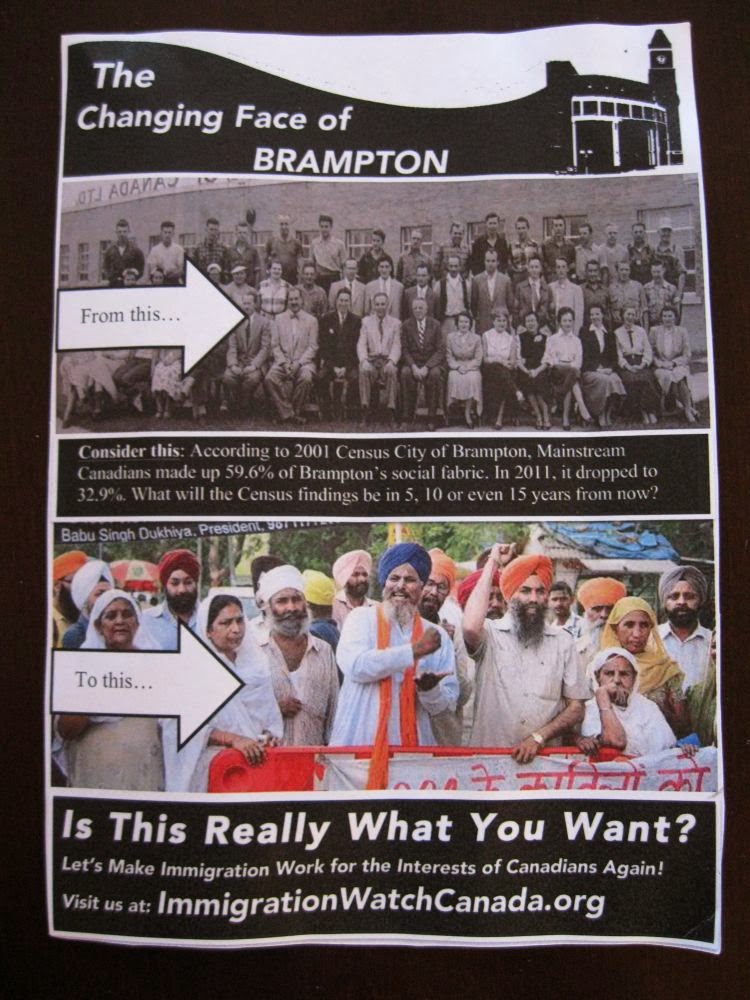…..Kashmir and Telangana…..annexed to the Indian union….After 1947, we became a part of India…Then
the troubles really started…..We need to
come out clean on Kashmir….Few parts were not ours….we should redraw the lines and move on……Development is suffering…. frequent bombings….R2.50 lakh crore allotted to defence…..If we have a peaceful environment we can spend money on education, women’s development or sanitation……
…
…
To be duly noted that K Kavitha is (i) Hindu, (ii) a Member of the Parliament (Lok Sabha, Nizam-abad constituency from Telengana district, member of Telengana Rashtra Samithi party, daughter of TRS founder K Chandrashekar Rao), and (iii) a woman.
Kavitha is also – as a strong, independent woman should be- standing up for her sisters and for the Uniform Civil Code!!! Eat your heart out, Arundhati Roy.
……
Let us try and unpack the statement (for transcript excerpts, see below) and the history behind it. Telengana (Muslim ruler, significant Muslim population) and Kashmir (Hindu ruler, majority Muslim population) wished to remain independent post-1947 (Jodhpur, Bhopal and Travancore had similar ambitions). The powerful combination of Patel, Menon and Mountbatten persuaded most royals to join India, in exchange for payment of an annuity (the “privy purse”). This privilege was abolished by Indira Gandhi (arguing for a socialist state) through a constitutional amendment in 1971.
……
There were also a number of irregularities as to how parts of Bengal and Punjab were awarded to India or to Pakistan. In the Sylhet district (then East Pakistan, now Bangladesh) Hindus lost in a close vote. It is alleged (by Hindu Bengalis) that this process was aided by Asomiya (Hindu) leaders who were worried that Sylhet as part of India would lead to Bengali domination in the North-East.OTOH Gurdaspur district (East Punjab) was awarded to India (allegedly because of romantic link between Nehru and Edwina Mountbatten). Similarly it was possible that Lahore would be go to India while Calcutta would be go to Pakistan.
Any Indian law-maker who says today that some territory should be an independent nation is liable to face sedition charges. This
is because Kavitha (unlike Roy) has sworn by the Indian constitution
to protect the nation. It will be interesting to see what the courts
make of her statements.
However on free speech grounds
it is simply remarkable that in today’s climate (if left-liberals are to
be believed), one can even think of making such statements. Indeed she
should have pointed out that Goa, Sikkim, and Junagadh were also
annexations, albeit with varying levels of coercion.
Where Kavitha (in our opinion) goes off-track is the claim that all “troubles” started after 1947- meaning oppression of Telengana people by Andhra people. People may conclude from this that she is making a pro-royalist argument in the form of either the British (de-facto), or the Dogras (Kashmir) and Nizam (Hyderabad). Actually we suspect it is something far more sinister.
If the plea is for devolution of power to the lowest level of administration, we would agree in full measure. Panchayati Raj (village rule) was what Gandhi had wanted. Instead what we have are 29 powerful states with a lot of inequalities at the district (and lower) level.
What she really means is that in a state where her dad is the (genuine) people’s hero, she can’t wait to be king. Just like Odisha where Naveen (Patnaik) Babu has benefited from the legacy of Bjiu Babu. Also see Punjab (Badal) and Tamil Nadu (Karunanidhi). The paid goondas of her party would be merrily going around extorting money from Andhra business-people (just like Kashmiri muslims are pelting stones at Pandits who plan to visit temples). This is why Hyderabad should have been declared an Union Territory but then Congress was busy playing (desperate) vote games.
If the proposed BJP plan to forcibly settle Pandits in Kashmir goes through (we are not in favor, many many more killings aka “sacrifice” on both sides) it will only work if they are settled in Union territories (feel free to draw Palestine analogies). True peace will not come to Kashmir unless Pakistan Army co-operates and that is unlikely to say the least.
Finally one thing that did bother us…a lot. Kavitha mentioned the defense spend and we agree that we should spend much less on defense and more on social justice. But then she talked about “frequent bombings” as a justification for (unilateral) surrender. It is our opinion that extremists will always find a reason to bomb us, Kashmir or no Kashmir. The same bunch of jihadis are responsible for “frequent bombings” in Pakistan, destroying shrines and killing fellow muslims (forget for the moment, the atrocities against non-muslims). There are very good reasons why we should settle the Kashmir problem but violence is not the answer and violence will be met with more violence (as has been indeed the case).
…………….
K Kavitha, Anupriya Patel and Pratap Simha, first-time MPs of
TRS, Apna Dal and BJP respectively, talk about the hurdles they face in
Parliament and their views on J&K and Article 370. This Idea
Exchange was moderated by Senior Editor D K Singh
…
K KAVITHA: I am a Masters in Computer Science and I
was part of the Telangana movement for seven years. I run an NGO called
Telangana Jagruthi, and we have tried to revive ethnic festivals that
are getting lost in these Valentine’s Day, Mother’s Day etc…
After the
formation of the Telangana state, our TRS party formed the government.
Then I won the (Lok Sabha) election from Nizamabad. My area of interest,
other than representing the aspirations of the people of Telangana, is
the Jammu and Kashmir issue. I hope that this government, which has a
massive majority, will take serious decisions and implement them.
….
ANUPRIYA PATEL: My journey is not very old in
politics. I joined politics after my father’s demise in 2010, and 2012
was the first election of my life. I spent two years as an MLA and now I
am an MP from Mirzapur, UP. One of my prime concerns is uplifting the
living conditions of tribals in Mirzapur.
There are other issues — the
poor standard of education and medical facilities — which I will try to
bring to the notice of the government. I’m one of the allies of the BJP,
a very small ally with only two members in the House. So I have my
party issues as well. My party is working for the backwards, tribals and
Scheduled Castes. I feel the government is not giving attention to this
aspect. I have tried to speak to the Prime Minister on these issues,
that a major section of the OBCs and the SC/STs turned in your favour.
They quit the SP, BSP, and turned to you because they found that you’re a
man of hope.
….
Coming to Parliament is a great experience because now you know what a
big responsibility it is and how the House works, the rules,
techniques, devices. It’s an enriching experience and, as a young MP,
exciting also. You become anxious because you don’t know lots of things
and at the same time you feel good too because it’s such a big platform,
the entire nation is watching you and you can learn and contribute so
much.
….
PRATAP SIMHA: I represent Mysore-Kodagu constituency in Karnataka.
I’m a Kannada journalist. My column is called Bettale Prapancha, which
means ‘naked world’, it bares facts. I write on contemporary issues,
sports, politics — anything, except science and technology.
When the
general elections were announced, the state and central BJP were looking
for an image makeover, so they looked for achievers from other fields.
Two or three names were announced, and one was mine. I’m also the
biographer of the first unofficial biography of Narendra Modiji. I
published it in 2008 and it was released by Arun Jaitley. It got
translated into Gujarati and Marathi. That is how I came in contact with
Modiji.
My constituency comprises two districts, Mysore and Coorg. In
one part of my constituency, they grow world-class tobacco, a majority
is exported. Coorg is the hometown of coffee breweries. Mysore has eight
engineering colleges, but only one major software firm. We need to
provide jobs to graduates. Also, the road connectivity between Mysore
and Bangalore is quite bad.
…..
D K SINGH: Being the son/daughter of a politician is an
advantage. But do you think it also becomes a baggage because people
have huge expectations from you and even if you do something great, it’s
attributed to your parents?
K KAVITHA: It’s an advantage because whatever
positive things come from my father (K Chandrasekhar Rao) are attributed
to me. At the same time, I’m compared to him. He’s a very good orator.
So whenever I pick up a mike, everybody, especially in Telangana, looks
at me with expectation.
The fear of failing is horrible and takes a toll
on your own creativity. To come out of that shadow is very difficult.
On a lighter note, people who cannot reach my father to either vent out
their anger or appreciate him come to me. Somebody who’s really upset
with my father will say, ‘Arre, his daughter is not good’. Politically,
it’s an advantage because we already have our own agenda, set map,
ideology. We practically grew up in a political atmosphere. I’ve seen
people flocking around my father from my childhood. So I understand the
dynamics of the system.
…..
ANUPRIYA PATEL: I don’t fall in Kavita’s or Pratap’s
category. Although my father (Sone Lal Patel) started the Apna Dal, the
party didn’t achieve success. He was not an MLA or MP. He left me with
the legacy of some votes which never converted into a powerful position.
So I see myself as a beginner. There’s nobody in my party to guide me.
But people perceive that Anupriya comes from a political background, so
she knows all.
…..
Pratap Simha: Having a political background
certainly helps you on the way. If my father was a politician or had
money, I would’ve gone to St Stephen’s or another good college. My
English would have been better. I would have learned other languages,
and studied in foreign colleges.
Whenever I enter the premises of
Parliament, there are a lot of photographers. No one takes our
photographs. When Jyotiraditya Scindia comes in, some daughters and sons
of great politicians, they’ll rush towards them, they’ll take their
photographs. If I have to raise my voice in Parliament, I have to
struggle to ask questions, or struggle during the zero hour. If there’s a
quota in every job sector, in Parliament also, we should be allotted
some time. Those who come up on their own should be allowed to speak.
……
Manoj C G: Kavitha, you said you feel strongly about Jammu
and Kashmir. As young MPs, how do you feel about issues like Article 370
and the uniform civil code which are on the BJP’s agenda?
K Kavitha: Jammu and Kashmir and Telangana were both
forcefully and at the same time annexed to the Indian Union. When I say
I feel strongly, it’s because we were both separate countries, but were
merged with the Indian Union after Independence.
In 1947, we were not a
part of India. After 1947, we became a part of India. Then the
troubles really started. None of our people was very rich before. So
it’s from the people’s perspective that I’ve started reading about Jammu
and Kashmir. We need to solve issues, particularly the Kashmiri
Pandits’ issue which is put up in the agenda of the BJP. They say we can
all take them back home, but it is just a political statement. You have
to create a safe environment before you take them there.
We need to
come out clean on Jammu and Kashmir. Few parts were not ours, we should
agree, we should redraw the international lines, and move on.
Development is suffering and you see frequent bombings.
Our economy takes a toll. Even in the Budget, almost Rs 2.50 lakh
crore has been allotted to defence. If we have a peaceful environment
in our bordering states, we don’t have to spend so much on defence. We
can spend that money on education, women’s development or sanitation.
Today, if I talk about no bathrooms in girls’ schools, I should be
ashamed of being a citizen of this country.
…..
MANOJ C G: What about uniform civil code?
K Kavitha: A lot of Muslim organisations are opposing
it, but I am for uniform civil code. We cannot control anybody’s
religion, but when it comes to law and order, to controlling the
internal security issues, a citizen is a citizen and should be dealt
with that way. So certain clauses need to be included in the uniform
civil code, some could be debated about. Only the marriage clause could
be excluded and dealt with separately.
…..
ANUPRIYA PATEL: To me, this idea is very strange
that we are a nation and we have a separate system in a state that falls
within the boundary of the Indian Union. However, I totally agree where
Article 370 is concerned. I heard the honourable PM say that, ‘Why
can’t we talk about it? Why can’t we discuss it?’. I feel that there
should be debate over Article 370, its existence and its relevance.
….
PRATAP SIMHA: As far as the uniform civil code is
concerned, the BJP has a stated stand on this, I don’t want to talk more
on this issue, and Modiji has called for a debate on Article 370. Has
Article 370 achieved what it intended to? If a Kashmiri woman marries
someone not from J&K, her children will not have the right to her
property. We need to raise our voice against this kind of
discrimination. There are no industries in Jammu and Kashmir because
they will not allow the industries to flourish there. And in 2009,
during the Amarnath Yatra, the pilgrims were not allowed to have a
permanent structure there.
…..
K KAVITHA: On the issue of not owning land or
property, Kashmir and Telangana have similar laws. We also had a
condition, a council, which said that no outsider could hold land in
Telangana.
But when N T Rama Rao came to power and scrapped the council,
he violated the Constitution, nobody was there to hear our voice, it’s
all gone. But Kashmir still has that law and council, so natives have
that protection.
But when you want to completely remove it, we have to
seriously think of the capacity of the natives regarding the issue. The
same thing we had in Telangana, but once it was removed, we suffered
very, very seriously. So when we are talking about the property rights
of Kashmiris, the opinion of the natives should be sought.
……
Link: http://indianexpress.com/article/india/india-others/no-one-guides-us-in-parliament/99/
….
regards
